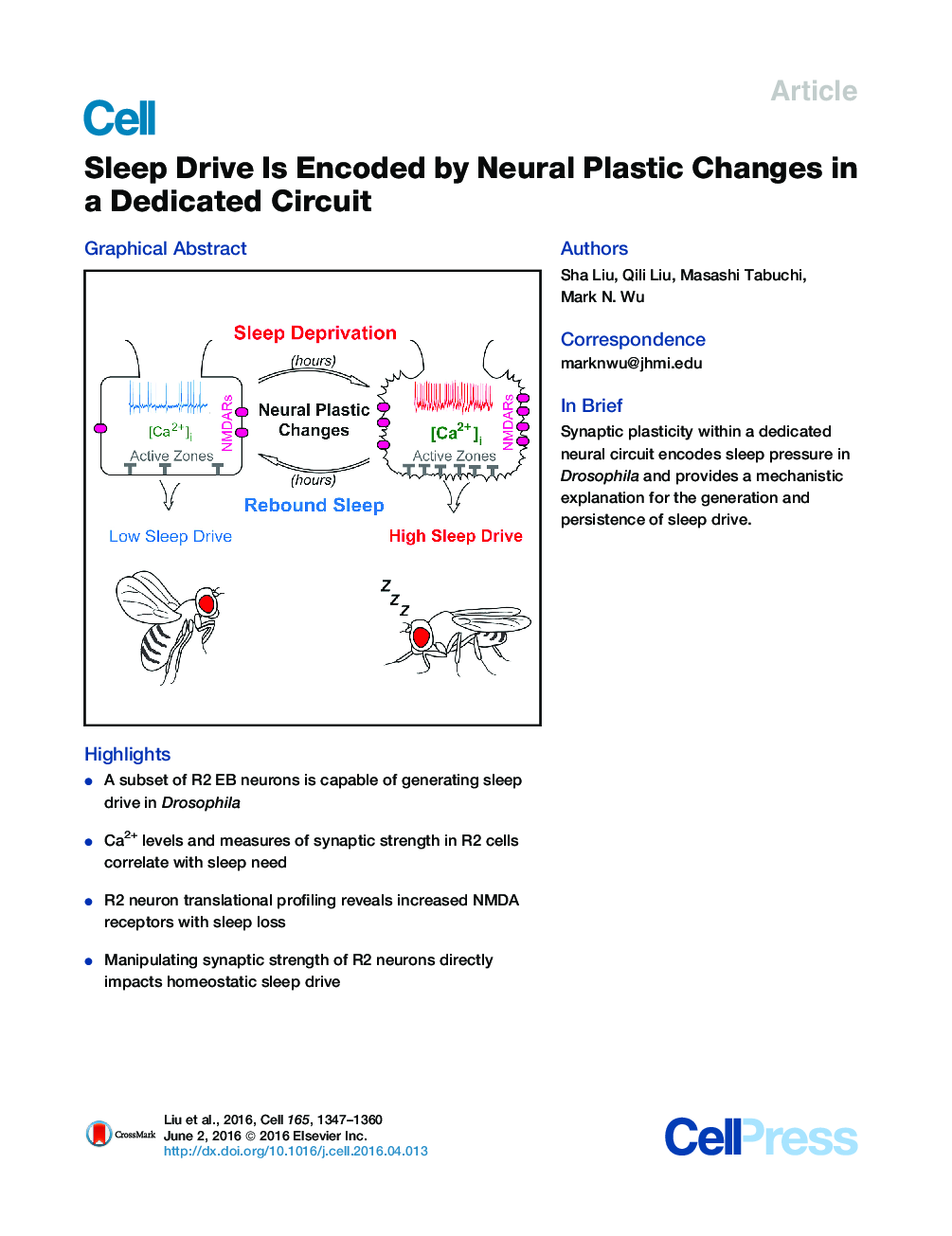| کد مقاله | کد نشریه | سال انتشار | مقاله انگلیسی | نسخه تمام متن |
|---|---|---|---|---|
| 2035027 | 1072125 | 2016 | 14 صفحه PDF | دانلود رایگان |
• A subset of R2 EB neurons is capable of generating sleep drive in Drosophila
• Ca2+ levels and measures of synaptic strength in R2 cells correlate with sleep need
• R2 neuron translational profiling reveals increased NMDA receptors with sleep loss
• Manipulating synaptic strength of R2 neurons directly impacts homeostatic sleep drive
SummaryProlonged wakefulness leads to an increased pressure for sleep, but how this homeostatic drive is generated and subsequently persists is unclear. Here, from a neural circuit screen in Drosophila, we identify a subset of ellipsoid body (EB) neurons whose activation generates sleep drive. Patch-clamp analysis indicates these EB neurons are highly sensitive to sleep loss, switching from spiking to burst-firing modes. Functional imaging and translational profiling experiments reveal that elevated sleep need triggers reversible increases in cytosolic Ca2+ levels, NMDA receptor expression, and structural markers of synaptic strength, suggesting these EB neurons undergo “sleep-need”-dependent plasticity. Strikingly, the synaptic plasticity of these EB neurons is both necessary and sufficient for generating sleep drive, indicating that sleep pressure is encoded by plastic changes within this circuit. These studies define an integrator circuit for sleep homeostasis and provide a mechanism explaining the generation and persistence of sleep drive.
Graphical AbstractFigure optionsDownload high-quality image (196 K)Download as PowerPoint slide
Journal: - Volume 165, Issue 6, 2 June 2016, Pages 1347–1360
